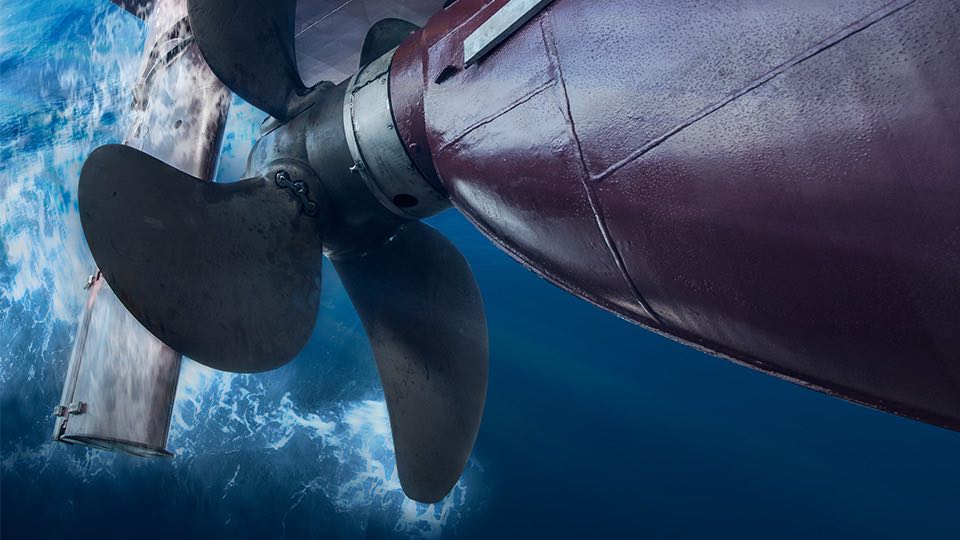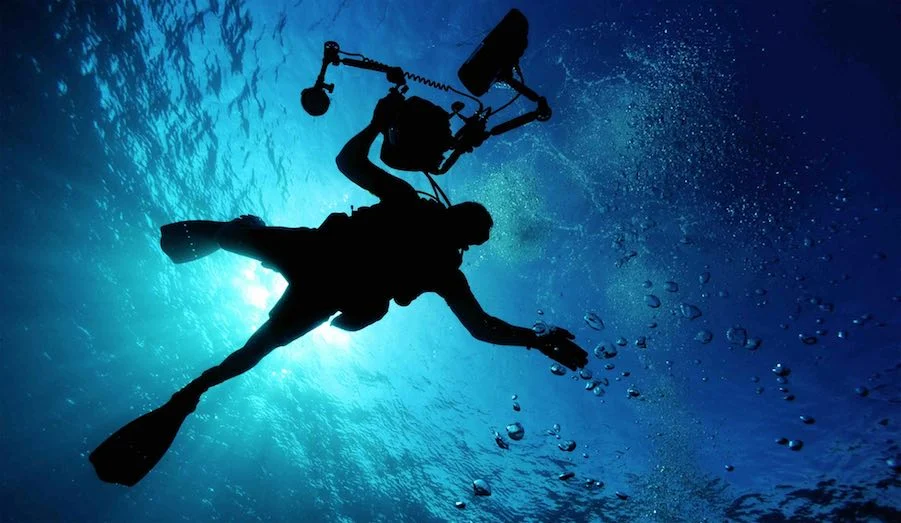28 November 2024
1 in 4 know little about biofouling – new survey report

Almost two-thirds (59%) of the shipping industry underestimate the negative environmental impacts of biofouling, with as much as 1 in 4 claiming to know little about the issue, a new report by marine coatings manufacturer Jotun has found.
Table of Contents
GHG emissions
In 2020, the Global Industry Alliance for Marine Biosafety moved to address head-on what stakeholders called the shipping industry’s “poor understanding” of the relationship between ships’ biofouling and fuel consumption/Greenhouse Gas emissions. That assessment came in spite of a coordinated attempt by the International Maritime Organization, BIMCO, several classification societies, and others to promote an understanding of the impact of biofouling on increasing ships’ drag in the water.
The poor understanding was also surprising given the overarching search for ways to minimize GHG emissions as the industry transitions to decarbonization. Having ascertained respondents’ belief that they had a moderately good knowledge of biofouling, the Jotun survey asked about the impact biofouling had on vessel GHG emissions.
The wide range of answers – from 11% thinking the impact on emissions was minimal (between 0% and 5%) to 27% thinking the impact was very significant (more than 20%) suggested there is no consensus even among those well-versed in biofouling.
With one in four respondents thinking the impact lies in the 6% – 10% range and a similar proportion putting the impact at between 11% and 15%, almost half of the respondents appear to accept biofouling does have an impact on emissions, although that impact is probably underestimated.
Research studies looking at different test surfaces and biofouling conditions have concluded that even a thin layer of slime could trigger an increase in GHG emissions of up to 25%. Medium or heavy calcareous fouling would represent a significantly greater impact.
The conclusion must be that the GloFouling Partnership’s observation that the perceived impact of biofouling “is likely to have been historically underestimated” is supported by this survey, which found that the impact is currently underestimated.
”If the shipping industry took a more proactive approach to hull cleaning, we as an industry could save as much as 198 million tonnes of CO2, which is more than six times the volume produced by the nation of Norway annually.”
“As we are a global industry, it is imperative that we take a united international approach if we are to succeed in reducing emissions, preserving fuel, and protecting the oceans’ biodiversity.”
Morten Sten Johansen, Global Marketing Director, Hull Performance Category
Invasive Aquatic Species
The issue of the transfer of invasive aquatic species through ships’ biofouling was first brought up formally to IMO’s attention in 2006. After three years of consultation by IMO member states, the 62nd session of the Marine Environment Protection Committee in July 2011 adopted guidelines for the management of biofouling which, it was hoped, would represent a “decisive step” towards reducing the transfer of invasive species.
Biofouling guidelines have been updated in the 12 years since MEPC 62, but more attention has been given to the management of ballast water than biofouling on ships’ hulls. This might have contributed to a mixed perception of the impact of hull biofouling among respondents to the Jotun survey.
Responses revealed the same proportion believed the impact of biofouling on the spread of invasive species was either minimal or very significant. More respondents thought the impact lies between the two extremes, however, there is little agreement on its importance.
More research is needed to quantify the significance of biofouling on ships’ hulls in the devastation of native species, and a broader understanding of the spread of invasive species is required across the maritime sector.
Whether the industry believes the issue is significant or not, port States have started to take action by restricting the arrival of ships with fouled hulls. New Zealand introduced antifouling laws in 2018, followed by Australia in 2022. Ships destined for ports in those States will need to clean their hulls ahead of arrival, which could become a problem for ship owners if the practice spreads.
It is likely that hull cleaning technologies that involve not only the removal of micro-organisms, algae, plants, and animals but also various technologies for proactive and reactive hull cleaning will develop in line with higher awareness of the issue.

Underwater cleaning of ship hull – Explained
This is everything you need to know about commercial underwater cleaning operations for a ship hull and its dangers.
Ship Nerd
The extent of biofouling’s impact on transferring invasive species around the world was highlighted almost 20 years ago. This survey is a snapshot of respondents’ thinking two decades on.
Behind the Antifouling Investment
Jotun survey respondents suggest the industry underestimates the impact of biofouling on GHG emissions and on the spread of invasive aquatic species. The first consideration for investment in any emissions reduction technology, therefore, must be whether such investment is really necessary.
Respondents said they mostly considered the range of emissions technologies through the lens of finance. Ensuring a return on investment (28%) in a reasonably priced technology (25%) and at an acceptable payback time (18%) were all thought to be important.
Investing in a technology a ship owner is already familiar with also plays a part but investing to meet SEEMP (Ship Energy Efficiency Management Plan), CII (Carbon Intensity Indicator), and even ESG (Environmental, Social, and corporate Governance) expectations is a weak driver.
Two-thirds of respondents said they had already invested in clean-hull solutions, with optimized
antifouling coatings as the leading option. Among the reasons for investing in higher-grade coatings (49%) rather than hull grooming by divers, robotic crawlers (33%), or Ultrasonic treatment (13%) is past experience. Premium coatings are not cheap, however, respondents suggest that monitoring performance on other ships in the fleet, staying close to the coatings manufacturer, and recognizing the cost savings gained all outweigh the price of a hull coating over time.
In contrast, respondents who had used hull grooming technologies picked out cost savings as the key consideration, while the few who had used Ultrasonic treatment said they had had a good experience on other ships.
It seems clear from this survey that ship owners’ investment in new technologies needs to overcome two obstacles: the first is making sure the finance is well spent but the second is persuading the investor that the decision is justified.
Regulation, Innovation & Biofouling Prevention
Although regulatory compliance per se should not be the most important consideration in biofouling management, it mustn’t be presumed that regulations do not have an impact on investor thinking. Only 5% of respondents to the Jotun survey said the Carbon Intensity Indicator regulation would have no influence on their proposals for tackling biofouling.
Some 29% of respondents said CII would ‘definitely’ be a consideration, with a further 20% saying ‘very probably’. One comment described tackling biofouling as ’part of the whole picture’; another observed that while biofouling is not directly mentioned in the CII regulation, it should still be considered as part of the response.
Among respondents who believed tackling biofouling would ‘probably’ impact decision-making in the future, the comment was made that global pressure on environmental matters would only increase. That is certain. The International Maritime Organization’s updates to regulations and guidelines covering ballast water management and the transfer of invasive aquatic species will get stricter – revised guidelines are subject to approval at MEPC 80 in July 2023 – and coastal State regulations will limit where hull cleaning can take place and how it should be performed.
New coatings technology, along with improved hull grooming and antifouling innovation are all developing to meet demand. There is a close relationship between regulations and innovation, and it is clear from responses to the Jotun survey that the majority of industry stakeholders are aware of the equally close relationship between ships’ hull biofouling, GHG emissions, and the spread of invasive species.
Unfortunately, perhaps, regulators move at a slower pace than innovators. For an international industry such as shipping, regulations ought to be applied globally but because invasive species have a targeted impact, regional or local regulations must be anticipated.
Source: Jotun
See Also
Stolt Tankers and Graphite Innovations & Technology (GIT) have signed a two-year agreement to apply GIT’s XGIT-PROP graphene-based marine coating to the propellers of 25 Stolt Tankers ships during 2023. XGIT-PROP is an eco-friendly product that reduces marine growth and improves propulsion efficiency while ensuring no harmful toxins and biocides are released into the ocean. This extensive application supports Stolt Tankers’ decarbonization ambitions and reinforces the company’s commitment to sustainability.

Stolt Tankers utilize new graphene propeller coatings on 25 vessels
Stolt Tankers has become the first Chemical Tanker company to apply GIT’s graphene-based propeller coatings to its fleet.


